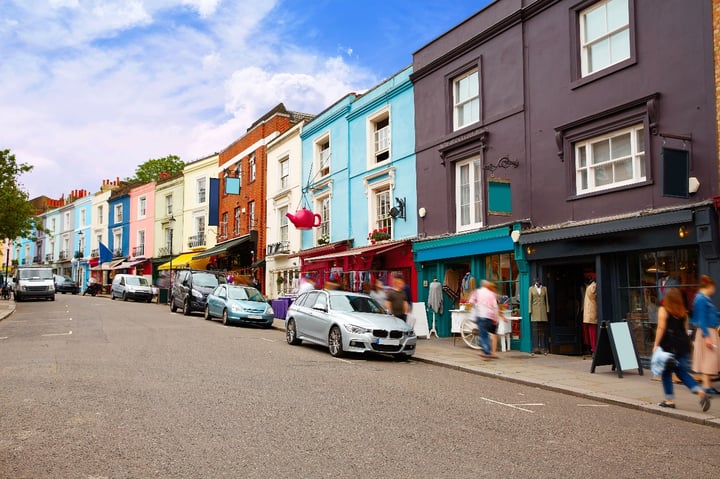Hear ye, hear ye, the end is near! All fear the Retail Apocalypse!
People have been predicting the death of brick-and-mortar shopping since Amazon was just an online bookstore, and recent big brand collapses — Toys ‘R’ Us, Payless, Sears, Forever 21 — have given more ammunition to their arguments.
It’s true. Walking through a mall or an urban shopping district feels different now than it did in 1999. But what the doomsday oracles often miss in their quest for clicky headlines is that the situation is more complicated and nuanced than it appears. For example, did you know that the number of retail stores in the U.S. is actually increasing? There were 3,100 more retail stores in the U.S. in 2018 than there were in 2017.
For example, did you know that the number of retail stores in the U.S. is actually increasing? There were 3,100 more retail stores in the U.S. in 2018 than there were in 2017.
So, what is the future of brick-and-mortar stores?
Physical retail may look different in 2020, but it’s far from dead — we should think of it less like a “Retail Apocalypse” and more like a “Retail Makeover.”
Let’s examine some of the trends and forces that are reshaping the brick-and-mortar landscape, and go over these predictions for the future of retail:
- The line between ecommerce and brick-and-mortar will get blurrier.
- The “experiential retail” trend will continue to grow.
- Customer service and relationship building will be more important than ever.
Brick-and-mortar and ecommerce are not enemies
The narrative has always gone like this: Amazon and it’s ecommerce cronies swarm into established brick-and-mortar territory armed with multinational bank accounts, gobbling up everything in sight.
And while that’s true to an extent, the story also promotes the false dichotomy that brick-and-mortar stores and ecommerce stores are competing for the same scarce resources.
The fact is that people very rarely shop exclusively online or in-store. Most of us do both, and for different reasons.
In the future, growth for brick-and-mortar businesses won’t mean beating ecommerce, but joining it. What does that look like?
- Customers may shop in store, want time to think about their decision, and make the purchase online later.
- Customers may order online and pick up their purchase in-store, perhaps buying additional merchandise when they get there.
- Customers may be prompted to shop in-store through online digital marketing, like loyalty program rewards emails.
- Stores may move to a “showroom” model, where merchandise can be tested or experienced in-store, but shipped from a central warehouse or made bespoke.
This all might seem well and good for the Wal-Marts and Targets of the world, but small-to-midsize retailers shouldn’t count themselves out. Modern web tools make it easier than ever to create ecommerce sites, and promoting customer loyalty through good service and incentives in-store can help them gain market share online as well.
Retail is all about the experience
PwC runs a massive global consumer survey every year, and they’ve discovered an interesting trend. From 2010-2014, consumers reported shopping in-store less often, but since 2015, the trend reversed, and the numbers have been steadily rising. What gives?
The report authors’ guess is that “Instead of a practical errand, [consumers] are seeing shopping increasingly as a sensory and social experience.”
Brick-and-mortar stores will never be able to compete with ecommerce in terms of selection and convenience. But when it comes to the joy of shopping, brick-and-mortar takes top prize every time. Brands that lean into the shopping experience are more likely to succeed.
Google “experiential retail” and you’ll find extreme case studies like building a skate park in a sneaker store, but it’s not all about big set pieces. Simply refreshing a store design, offering new amenities (free espresso, anyone?), or adding more interactive elements can make in-store shopping feel less like a chore and more like a good time.
Read more: Experiential Retail Trends for Small Businesses
Customer service and relationship building matter more than ever
More than anything, the rise of ecommerce has meant increased competition. Now a clothing store in Milwaukee isn’t just competing with their city, they’re competing with the entire world.
Brick-and-mortar retailers’ best weapon in this fight is relationships. Brands that forge strong bonds with their customers will be more resilient than those who treat them like wallets with legs.
And while all the same advice applies to customer service now as it did 100 years ago — treat people with respect, be helpful, etc. — today’s brick-and-mortar stores also have technology on their side.
Loyalty programs, for example, can incentivize repeat business and keep a store top-of-mind. They also produce valuable data that can be used to track the lifetime value of repeat customers.
Conclusion
Nobody knows what the future holds for brick-and-mortar stores, but this much is certain: those that perceive change as more of an opportunity than a threat are more likely to succeed.
Fight fire with fire. Learn how to boost ecommerce sales in 2020 and beyond. Request a demo.




